Posted by Kasey | 10.21.2020 | Conservation, Karen Beasley Sea Turtle Hospital, Marine Science, Sea Turtle Camp, Sea Turtle Camp News, Turtle Talk
That’s a Wrap!
As sea turtle nesting season comes to a close on the East Coast of the United States, it is important to look at how the sea turtles are doing!
North Carolina has about 330 miles of sandy beaches that provide great nesting habitat for sea turtles. Since the late 1970s, the North Carolina Wildlife Resource Commission (NCWRC) has been monitoring sea turtle nesting activities up and down the North Carolina coastline. To date, loggerhead (most common), green, leatherback, and Kemp’s ridley nests have been recorded – even two hawksbill sea turtle nests were recorded in 2016. With the help of more than 1,000 volunteers, the NCWRC can monitor nesting activities and collect data that is crucial to monitoring populations, making management decisions, creating protective regulations, and helping to increase sea turtle numbers.
This year, 1,387 nests were laid along the North Carolina coastline. The first nest was laid by a loggerhead on May 3rd at the Fort Fisher State Recreation Area and the last nest was laid on October 9th by a green turtle at Cape Hatteras National Seashore. It is estimated that 1,328 nests were from loggerheads, 48 from green turtles, 8 from Kemp’s ridleys, and 3 were unknown.
Although nests are flagged and protected, the start to a sea turtle’s life is rough! The nests and eggs are affected by so many things. How deep the nest is, tides and storms, predatory animals like foxes, coyotes, raccoons, and ghost crabs, and even humans all have an effect on nest success! The NCWRC estimates that 122,713 eggs were laid this season, but only 44% of those hatchlings successfully emerged from the nests. Once the sea turtle hatchlings emerge, it is a long swim to adulthood. It is estimated that 1 in 1,000 survive the first year and as few as 1 in 5,000 – 10,000 survive to become adults. Here are some tips for helping North Carolina sea turtles successfully grow:
- Use sea turtle friendly lights or no lights at all! – In order to prevent nesting mamas andhatchling turtles from wandering off track, make sure yourbeachfront property has sea turtle friendly lighting (red lights) or be sure to turn off any lights that are visible on the beach. Sea turtles use the light from the moon to guide them to the ocean and become easily distracted by bright lights!
- Knock down sandcastles and fill in holes – Sandcastles are obstacles to female sea turtles and their hatchlings, and they can easily fall into holes and get stuck! Also, be sure to remove all beach accessories such as toys, chairs, and umbrellas because they can obstruct sea turtles as well.
- Remove any trash or debris from the beach – Not only does trash act as an obstacle for sea turtles, it also attracts unwanted pests like raccoons, foxes, coyotes, and other types of animals who are interested in your leftovers!
- Never interfere with the nesting or hatching process – It is important to allow hatchlings to crawl to the ocean on their own. Scientists believe the journey from the nest to the water helps the turtles remember their own beach. Mamas come back to the beach where they hatched to lay their own eggs and picking up hatchlings may interfere with the process. If you see a nesting turtle or a nest hatching, be sure to contact your local volunteer organization!
Most beaches in North Carolina have sea turtle monitoring program that could use your help. To become involved and learn about North Carolina sea turtle projects, contact the beach coordinator specific to your area here. If you are not local to North Carolina, but you visit a local beach of your own, always remember to do your part in keeping our beaches clean and our sea turtles safe and healthy!


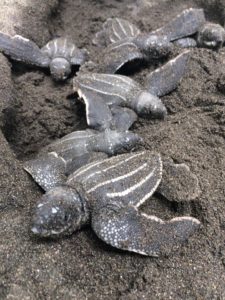
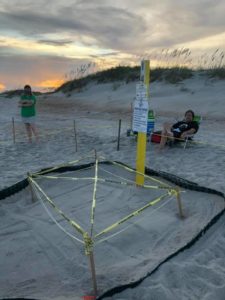
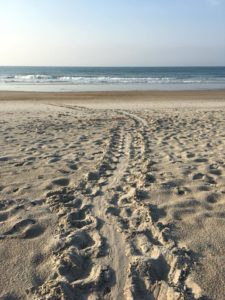
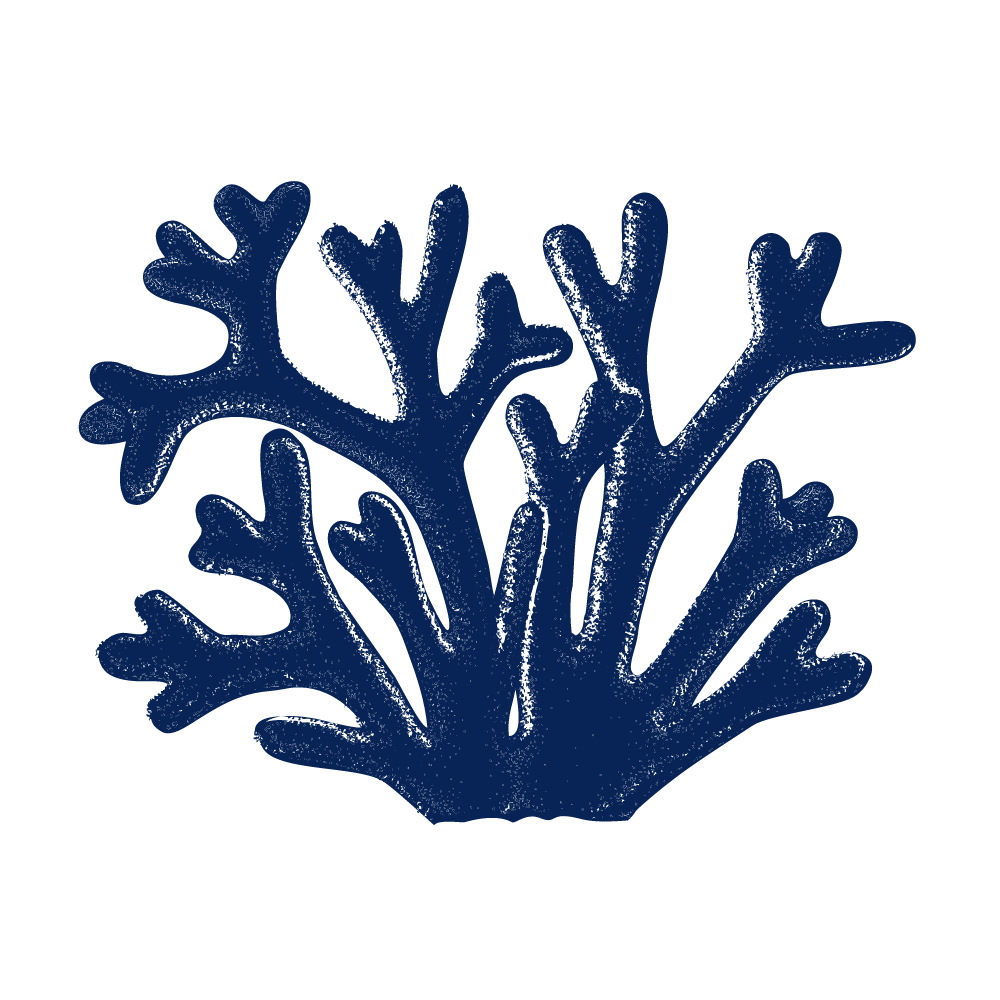 Marine Bio
Marine Bio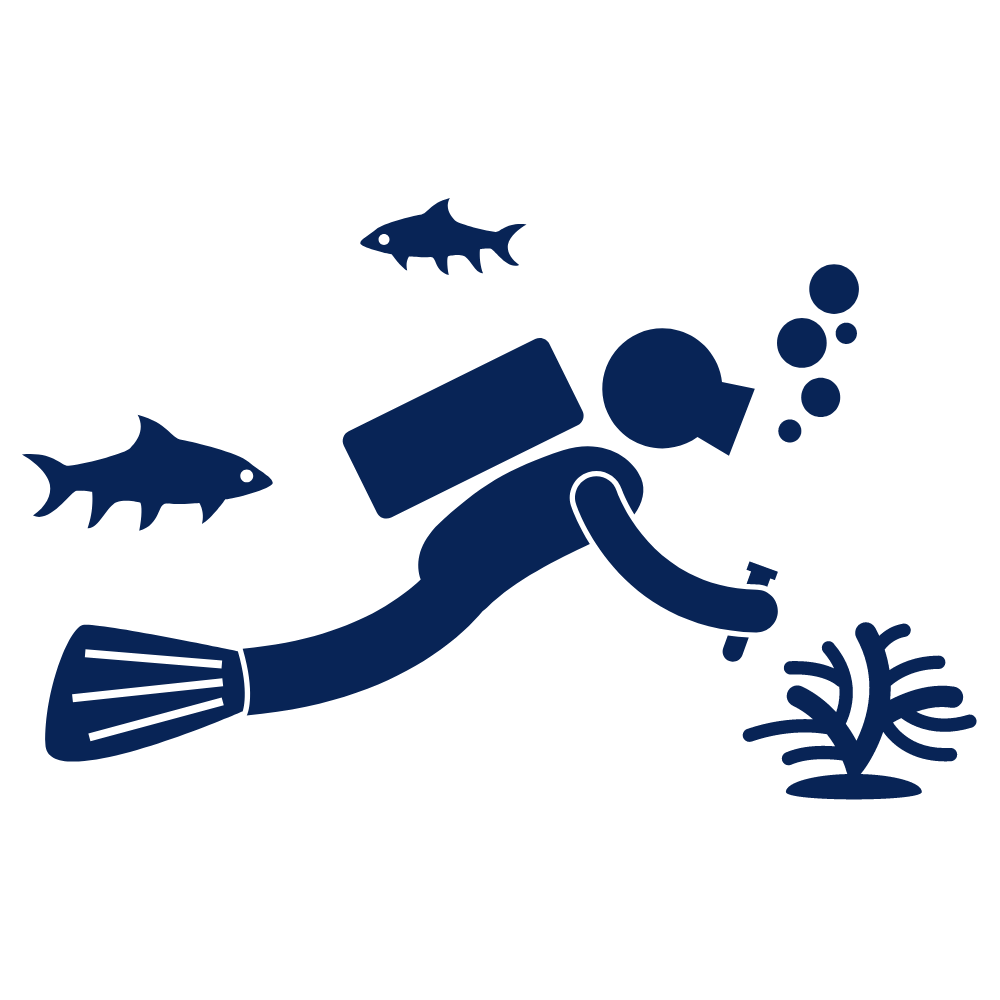 SCUBA
SCUBA Travel
Travel School Groups
School Groups Sign Up
Sign Up CONTACT
CONTACT CAMPS
CAMPS ABOUT
ABOUT